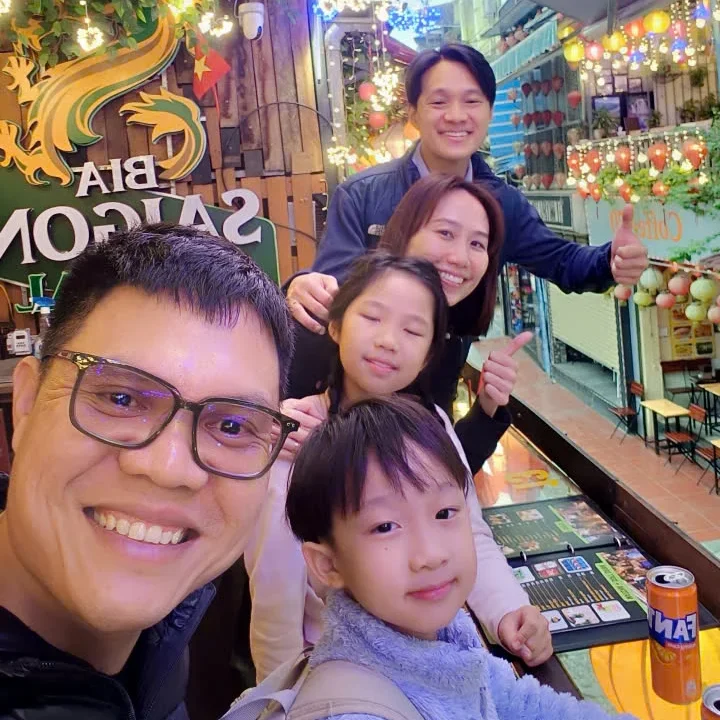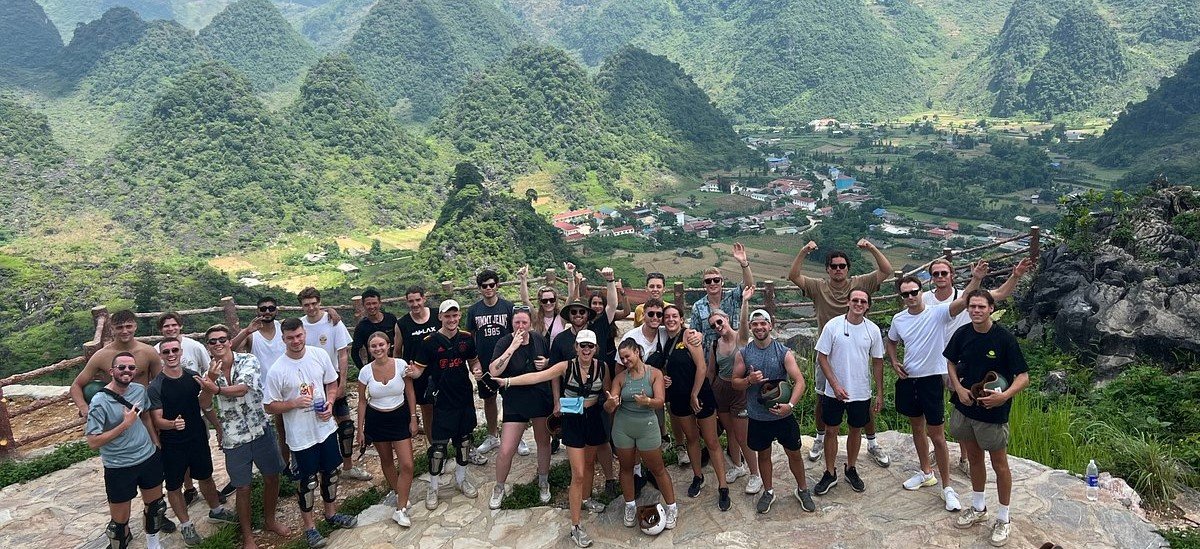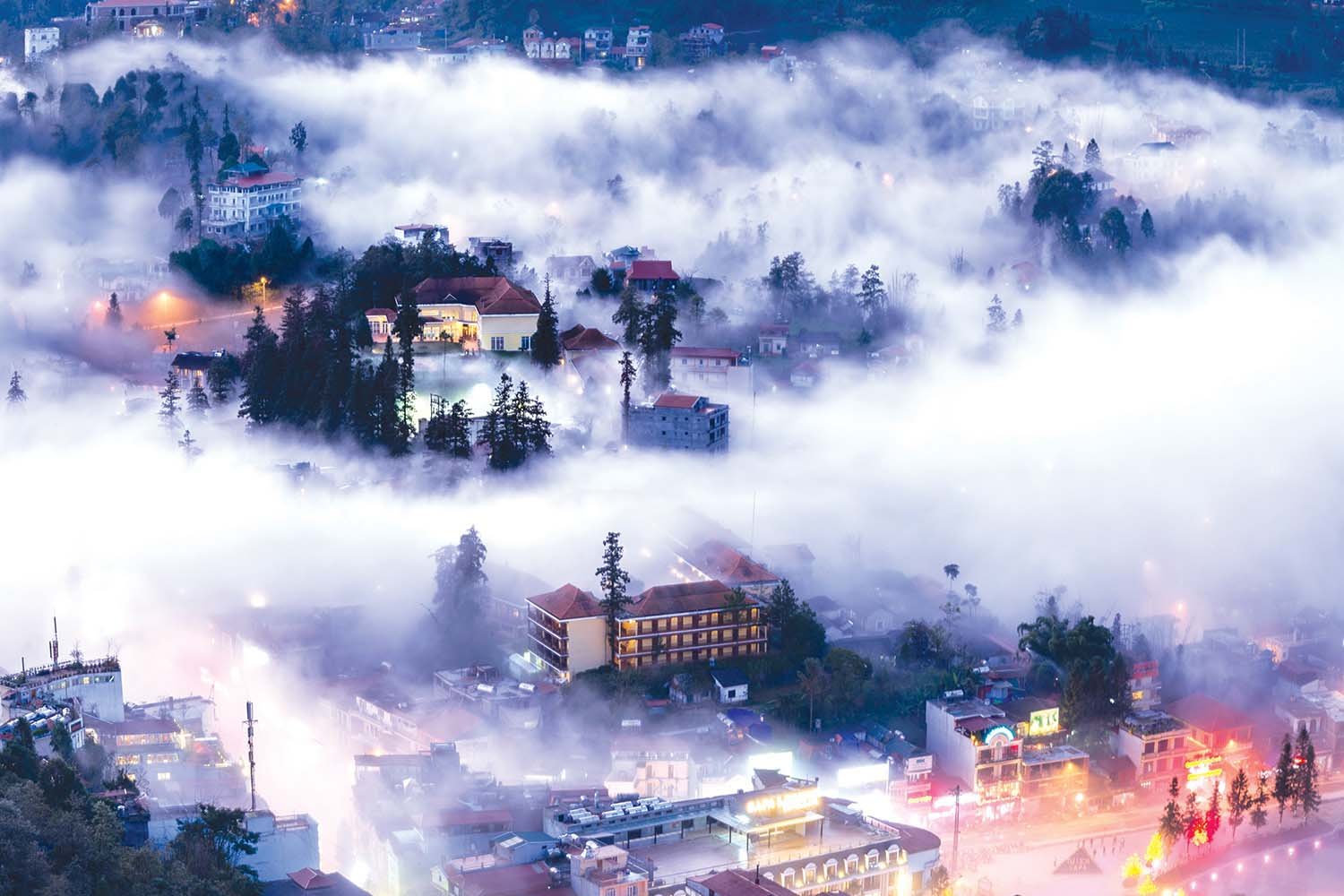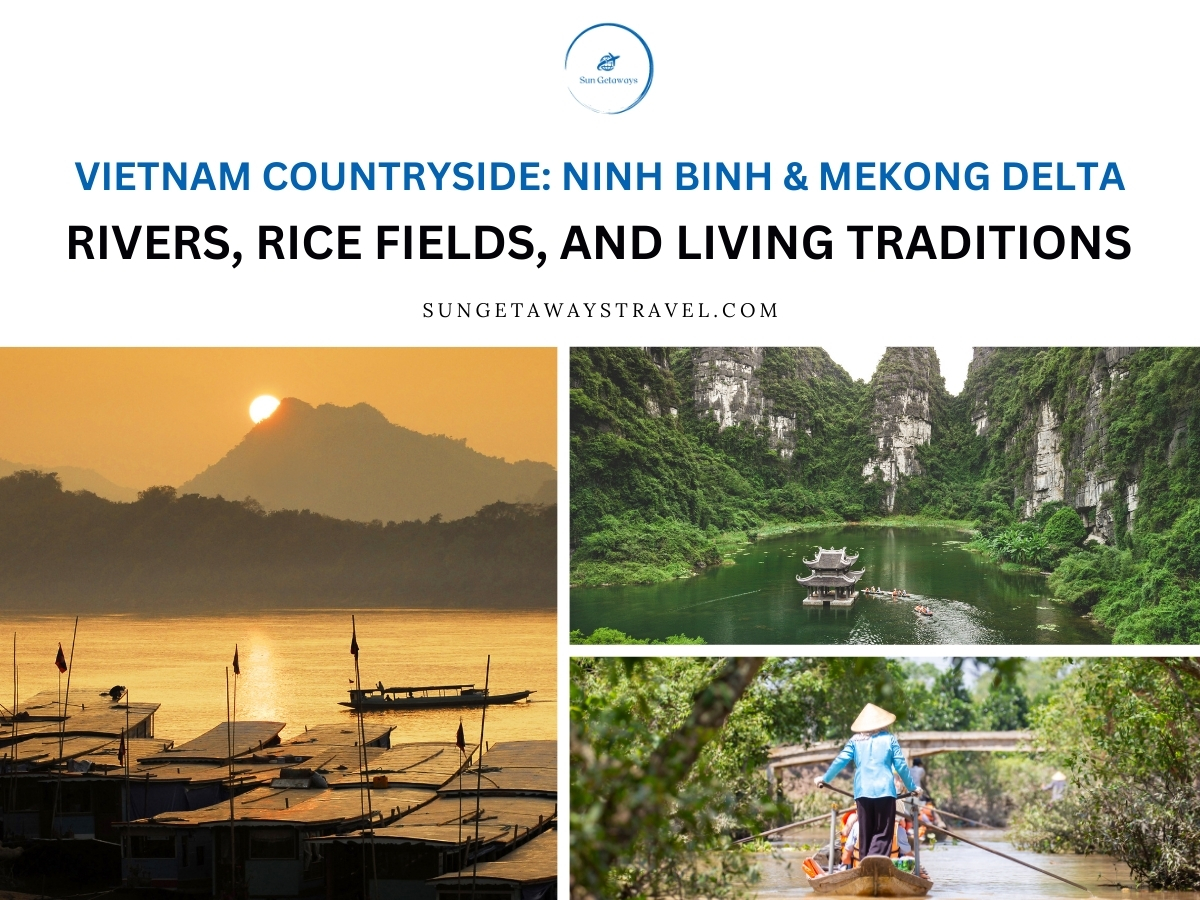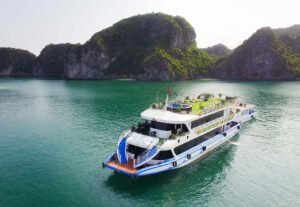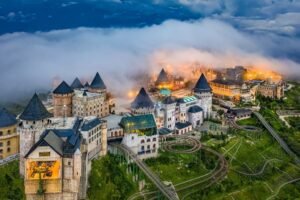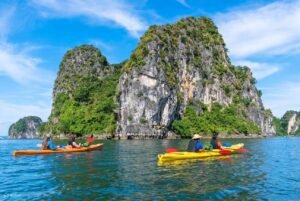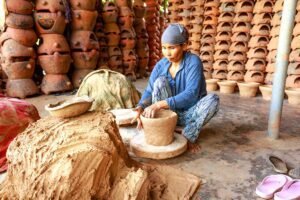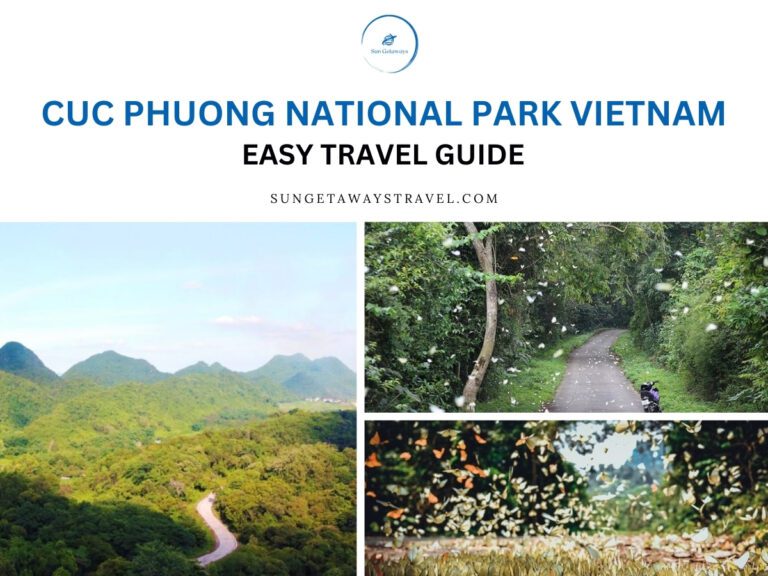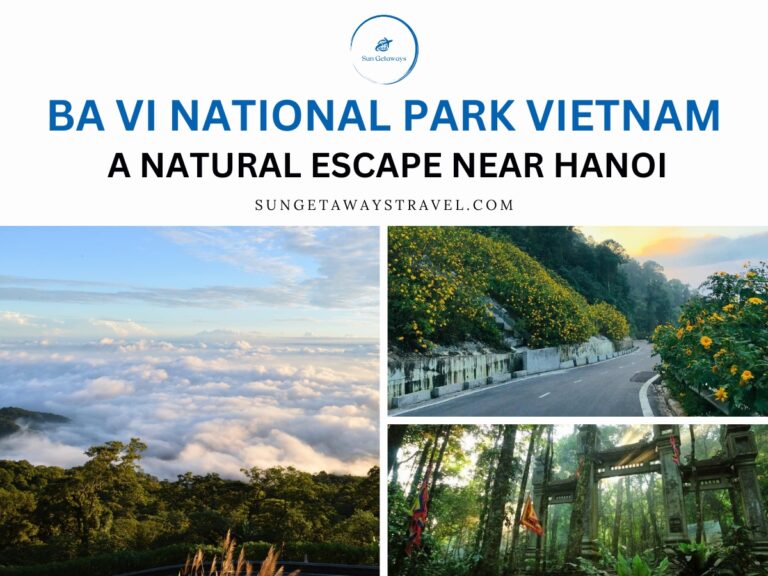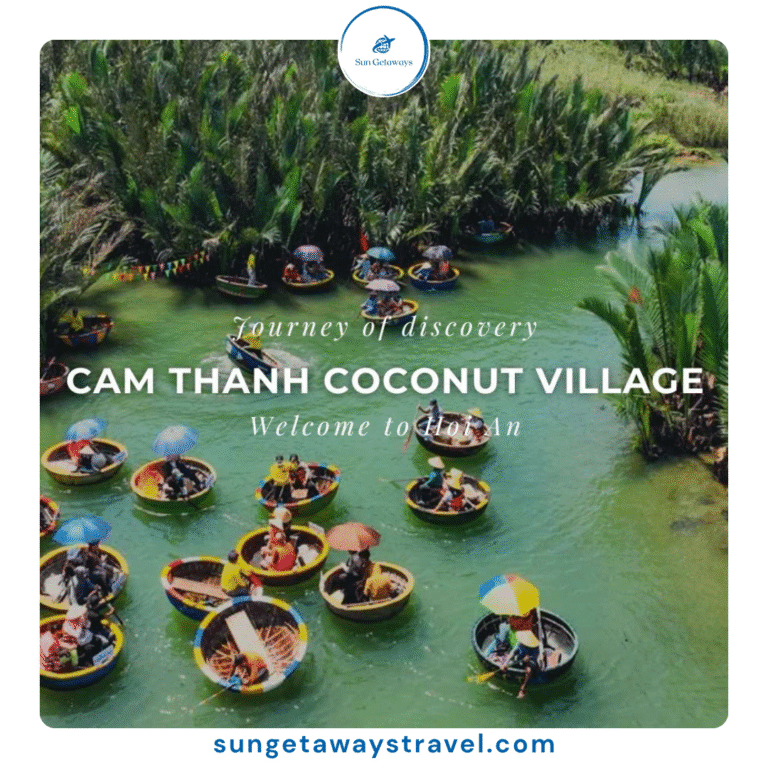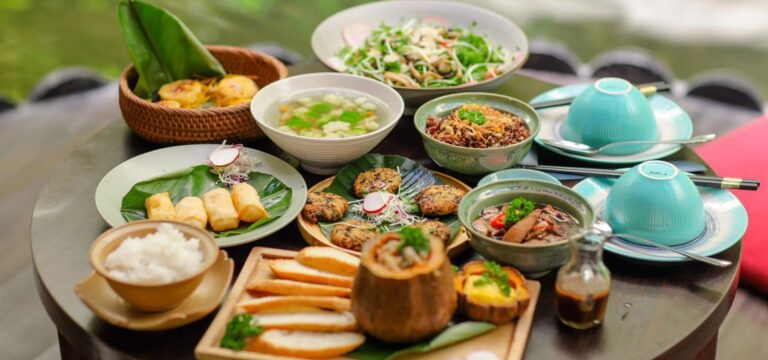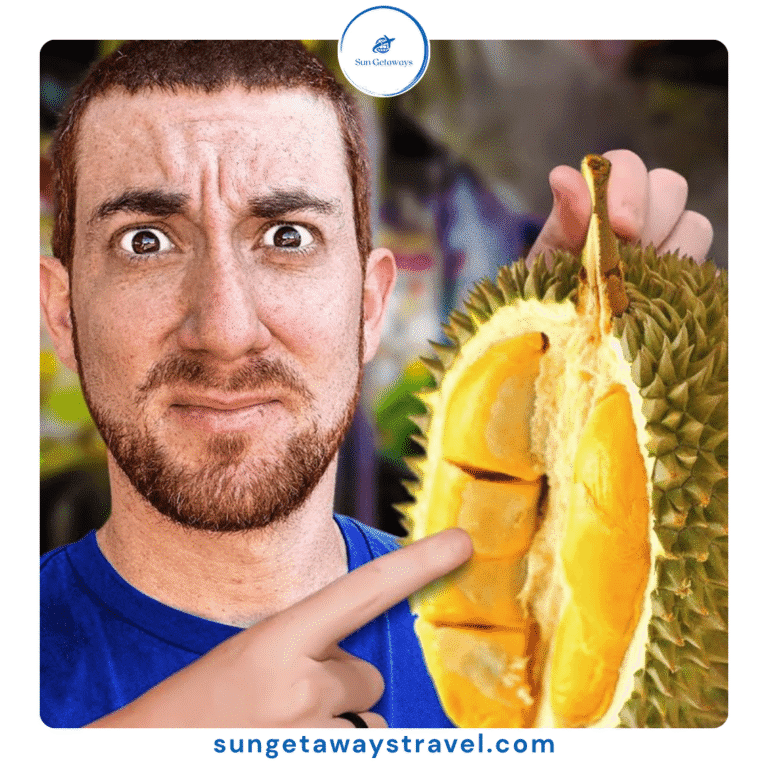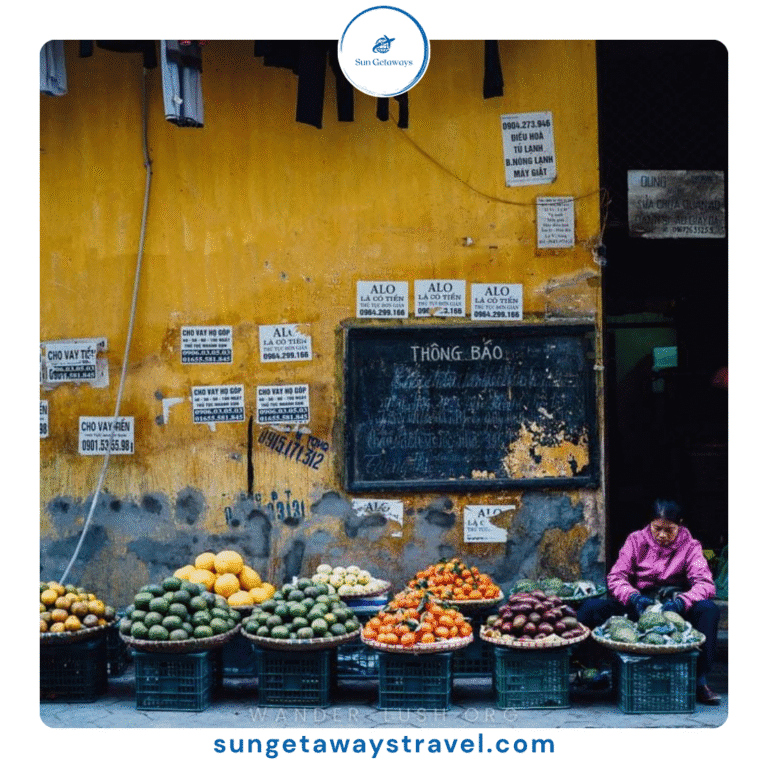Vietnam Countryside: Ninh Binh & Mekong Delta Highlights
 PhamDuong
PhamDuong The Vietnam countryside is where village life thrives, blending nature, tradition, and daily routines in harmony. Unlike bustling cities, rural regions preserve timeless values, carrying the memory of dynasties, legends, and farming cycles. Here, festivals bloom alongside rice paddies, and communities maintain their cultural heartbeat through daily rituals.
1. Vietnam Countryside: Why It Matters
1.1. Vietnam Countryside as the Cultural Backbone
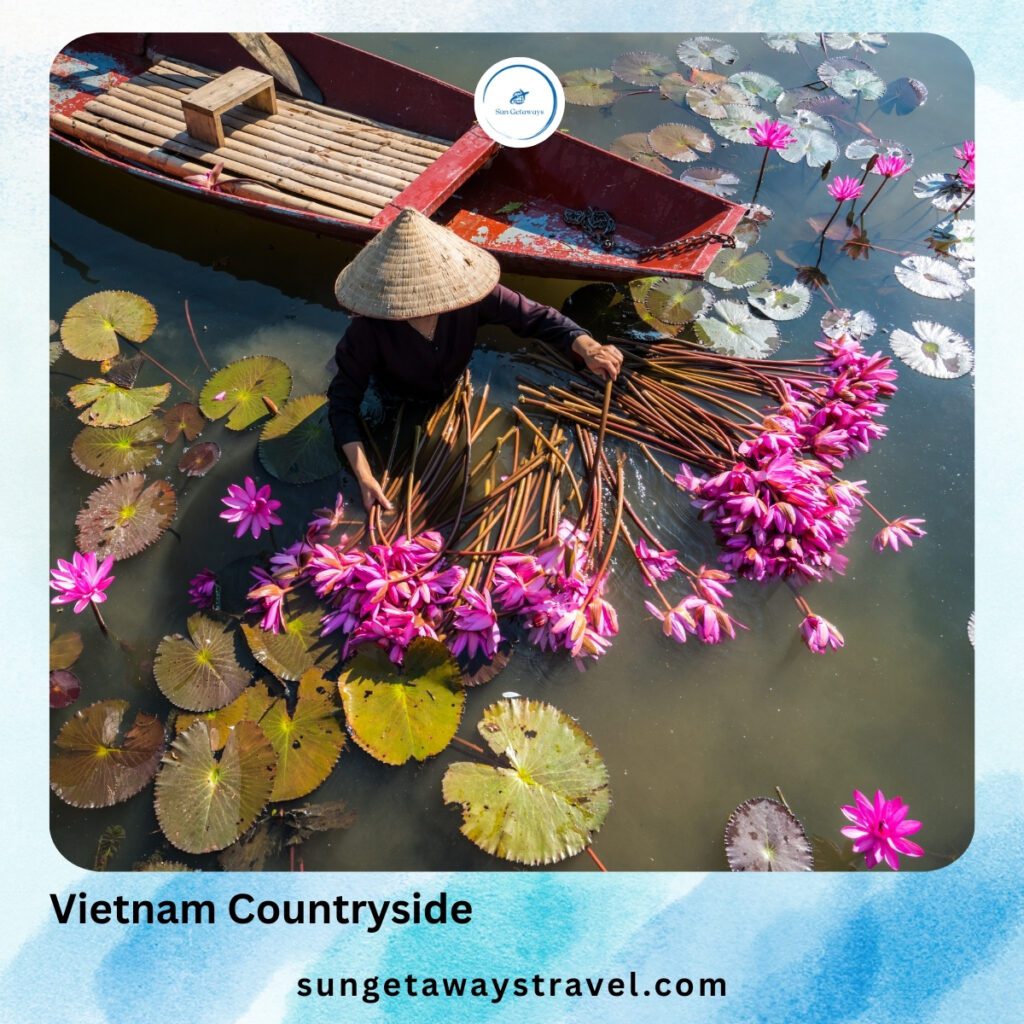

For centuries, the Vietnam countryside has been the foundation of the nation’s identity. It is where dynasties rose and fell, where Confucian values took root, and where agricultural labor shaped the economy and social structure. Temples, pagodas, and ancestral houses dot the landscape, serving as spiritual anchors for communities.
The countryside is also the birthplace of many Vietnamese customs—from Tet celebrations to harvest festivals. Villagers do not treat these traditions as museum pieces; they weave them into their daily lives and pass them down through generations. In this way, the countryside remains the cultural backbone of Vietnam, grounding the nation in its history and values.
1.2. Village Life Vietnam
The charm of village life in Vietnam lies in its simplicity and warmth. Morning markets bustle with vendors selling fresh produce and homemade snacks. Children ride bicycles along dirt paths, and elders gather under banyan trees to sip tea and share stories. Communal activities—whether rice planting, festival preparations, or temple ceremonies—foster a strong sense of belonging.
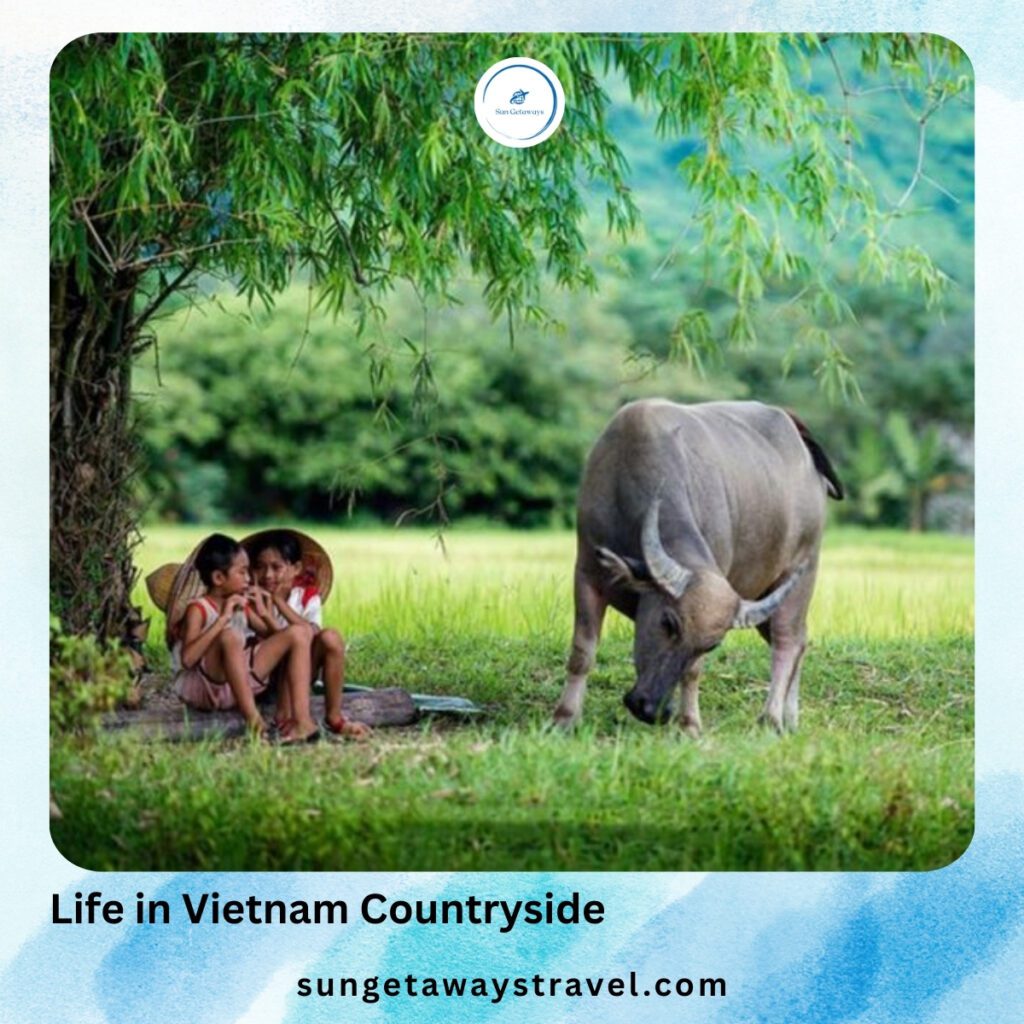

In many villages, time seems to slow down. Life follows the rhythm of nature: the rising sun, the changing seasons, the cycles of planting and harvest. This slower pace offers a refreshing contrast to urban life and invites visitors to reconnect with the essentials—community, nature, and tradition.
1.3. Diversity Across Regions – Vietnam countryside
The Vietnam countryside is not monolithic. In the north, dramatic mountains, terraced rice fields, and ancient capitals define the region. In the south, it is a watery world of canals, orchards, and floating villages. Each region has its own dialects, customs, and culinary specialties, reflecting the country’s rich cultural mosaic.
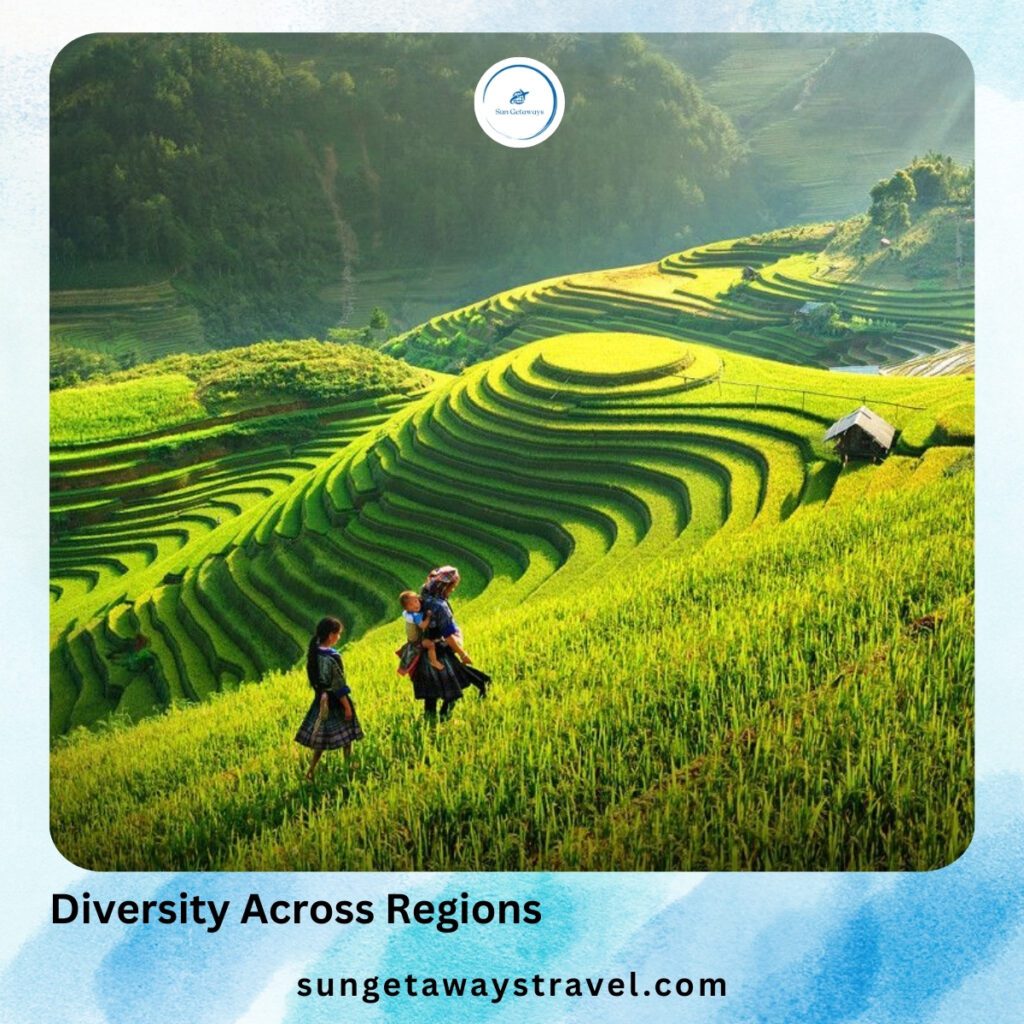

This diversity is what makes Vietnam’s rural areas so compelling. Whether you trek through misty hills in the north or drift along a southern river, you experience a unique facet of village life in Vietnam—shaped by geography, history, and local spirit.
2. Ninh Binh: Limestone Mountains and Ancient Capital
2.1. Landscape & Heritage
Tràng An
Tràng An is a UNESCO World Heritage site that perfectly embodies the poetic beauty of the Vietnam countryside. Its labyrinth of waterways winds through towering limestone cliffs, lush forests, and sacred temples, creating a surreal experience for travelers. The boat journey here is quiet and meditative—rowed by local women who navigate through caves and grottoes with practiced ease. Each turn reveals a new vista: a hidden shrine, a cliffside pagoda, or a mirror-like lagoon reflecting the sky.
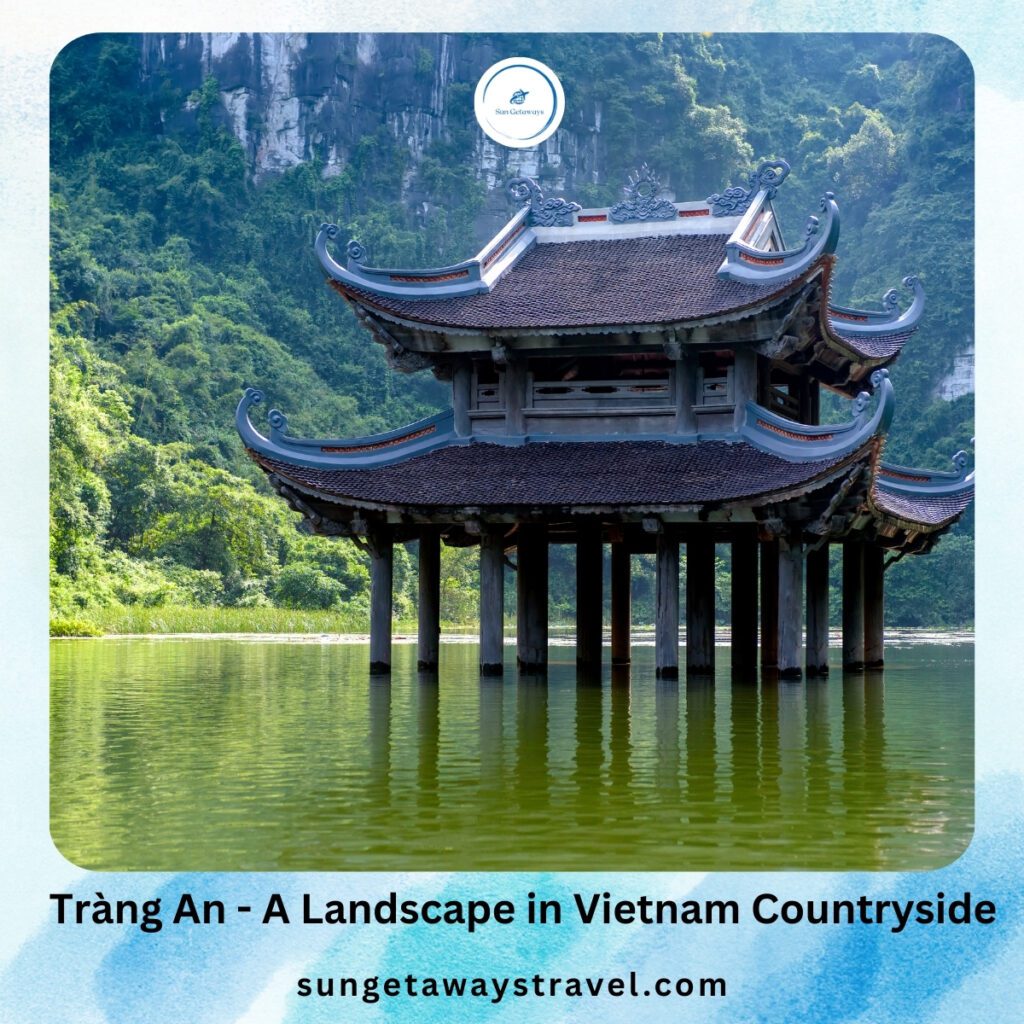

Beyond its natural splendor, Tràng An is steeped in history. Archaeological findings suggest human habitation dating back thousands of years. The complex’s temples dedicate themselves to emperors and deities, blending spiritual reverence with ecological harmony. It’s a place where nature and heritage coexist, offering a deep dive into the soul of northern village life in Vietnam.
Tam Cốc – Bích Động
Tam Cốc, meaning “Three Caves,” is often called “Halong Bay on land” for its dramatic karst formations rising from rice paddies. The boat ride along the Ngô Đồng River is a highlight—especially in late May or early June when the rice fields turn golden. The slow glide through the caves, with stalactites hanging low and cool air brushing your skin, feels like entering a sacred realm.
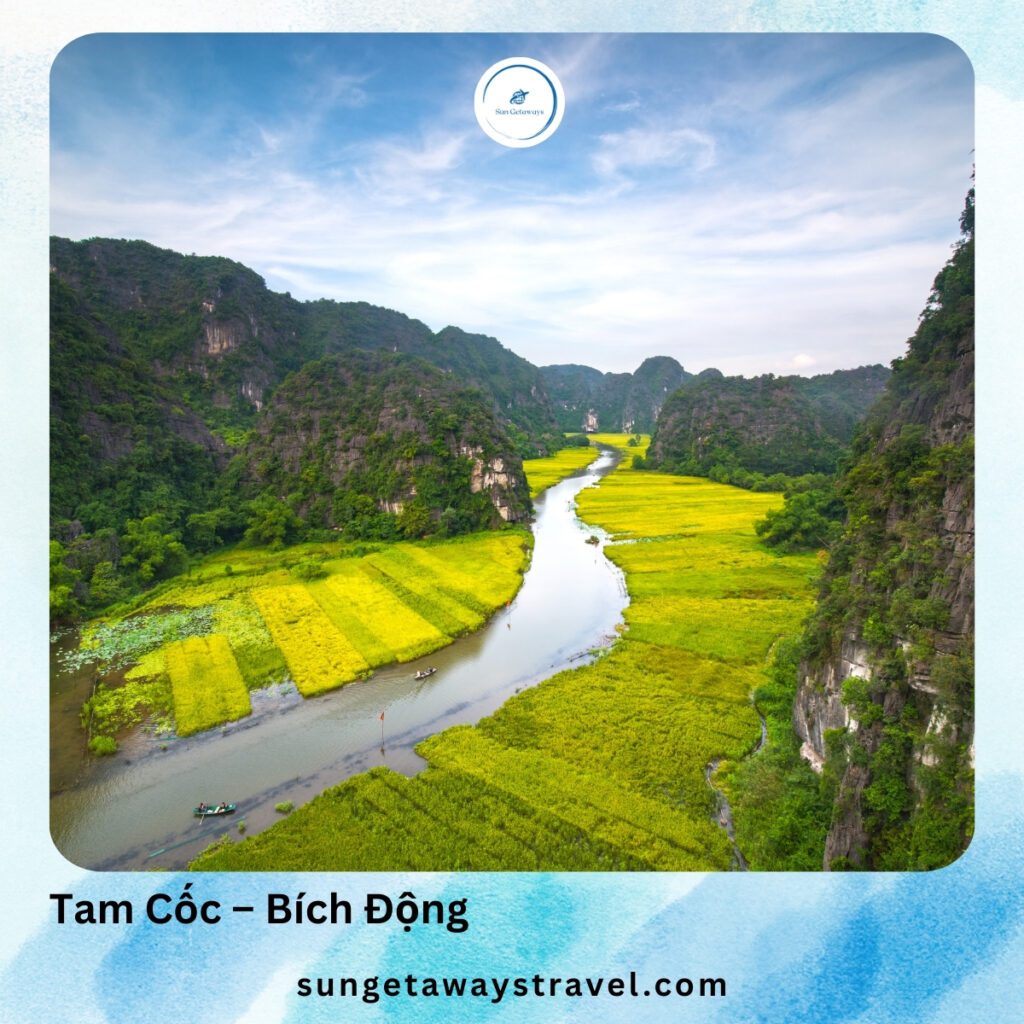

Nearby, Bích Động Pagoda clings to the mountainside, accessible by stone steps that wind through mossy rocks and banyan trees. The pagoda’s three levels—lower, middle, and upper—symbolize spiritual ascension. From the top, the view stretches across the valley, revealing the tranquil rhythm of the Vietnam countryside: farmers harvesting rice, children cycling along narrow paths, and sampans drifting in silence.
Hang Múa
Hang Múa offers a panoramic viewpoint atop a steep limestone peak. Visitors who climb nearly 500 stone steps enjoy a breathtaking vista of Tam Cốc’s rice fields and winding rivers. The dragon-shaped sculpture at the summit adds a mythical touch, as if guarding the land below.
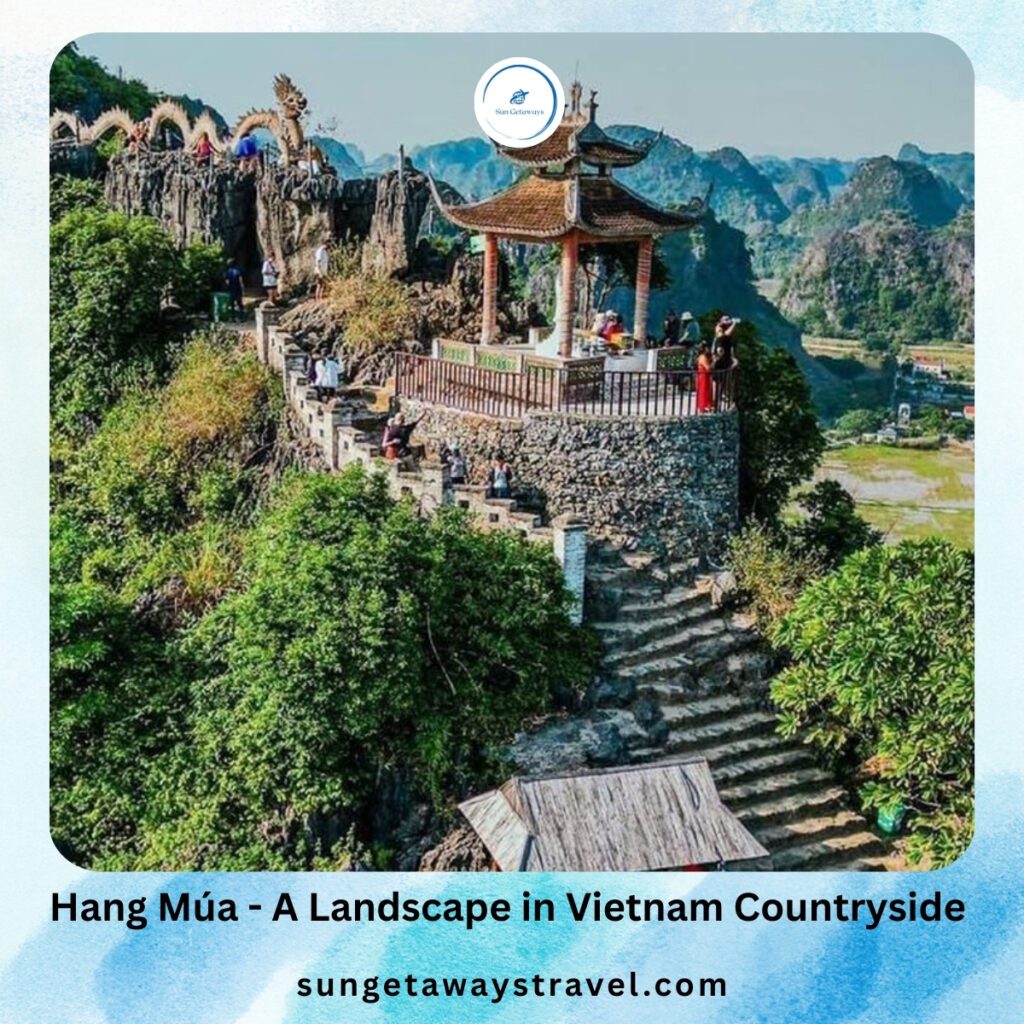

At sunrise, the landscape glows with soft light, and the valley awakens slowly—mist rising from the fields, birds calling from the cliffs. It’s a moment of stillness that captures the essence of the Vietnam countryside: majestic, grounded, and timeless. Hang Múa is not just a viewpoint—it’s a place to reflect, breathe, and feel connected to the land.
Cố đô Hoa Lư
Hoa Lư was Vietnam’s first capital in the 10th century, home to the Đinh and early Lê dynasties. Today, its remnants—stone temples, ancient walls, and lotus ponds—offer a glimpse into the country’s formative years. The temples dedicated to Đinh Tiên Hoàng and Lê Đại Hành are modest yet dignified, surrounded by serene gardens and mountain backdrops.
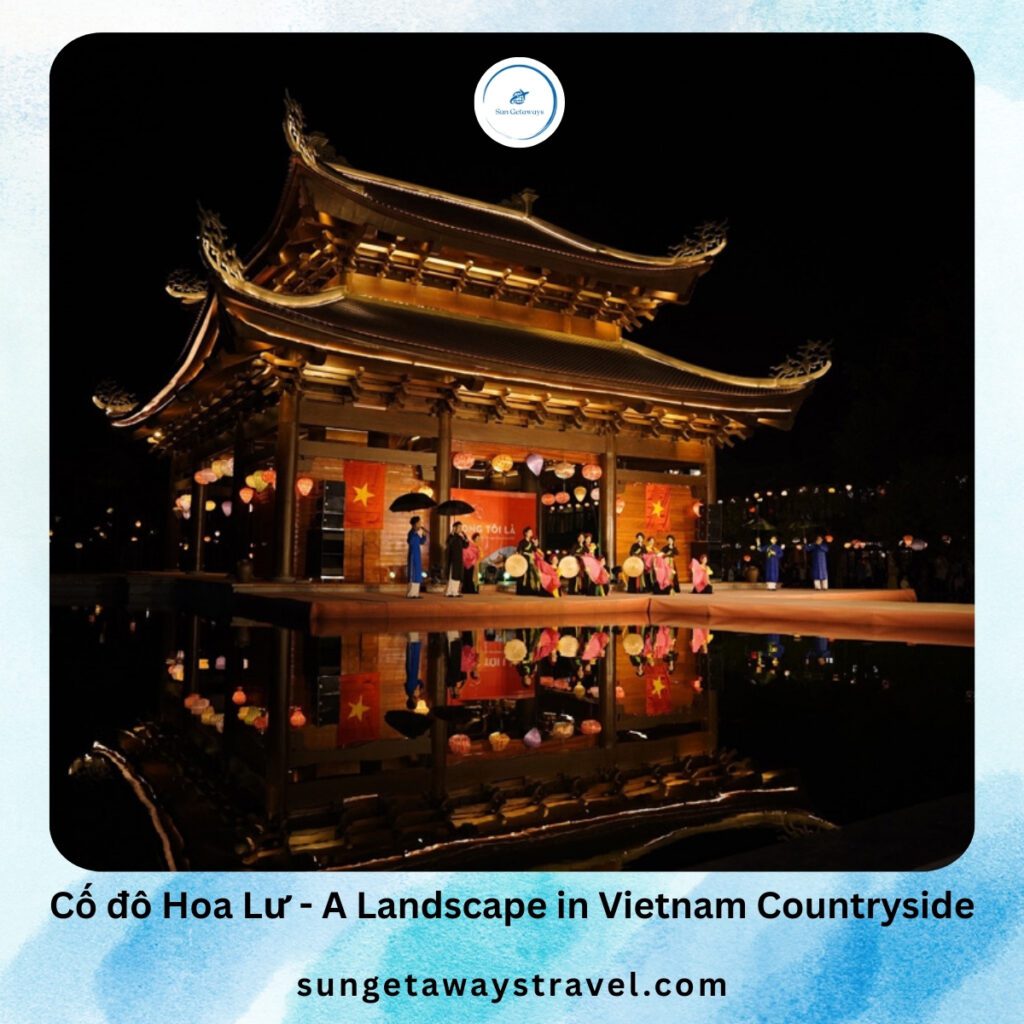

Walking through Hoa Lư feels like stepping into a living museum. The air carries the scent of incense and blooming flowers, and local guides share stories of royal intrigue and national unification. It’s a place where history is not just remembered—it’s honored daily by the community, making it a cornerstone of village life in Vietnam.
👉 Want a deeper dive into Ninh Binh’s landscape, culture, and hidden gems — all tailored to your interests? Customize your experience via Sun Getaways Travel.
2.2. Cultural Depth – Vietnam countryside
Ninh Bình’s cultural richness stems from its dual identity as a natural wonder and historical heartland. The region’s temples and pagodas are not mere tourist stops—they are active centers of worship, where locals pray for health, harvest, and harmony. The local people deeply intertwine their spiritual life with the land, from making offerings at cave shrines to holding festivals in honor of ancestral spirits.
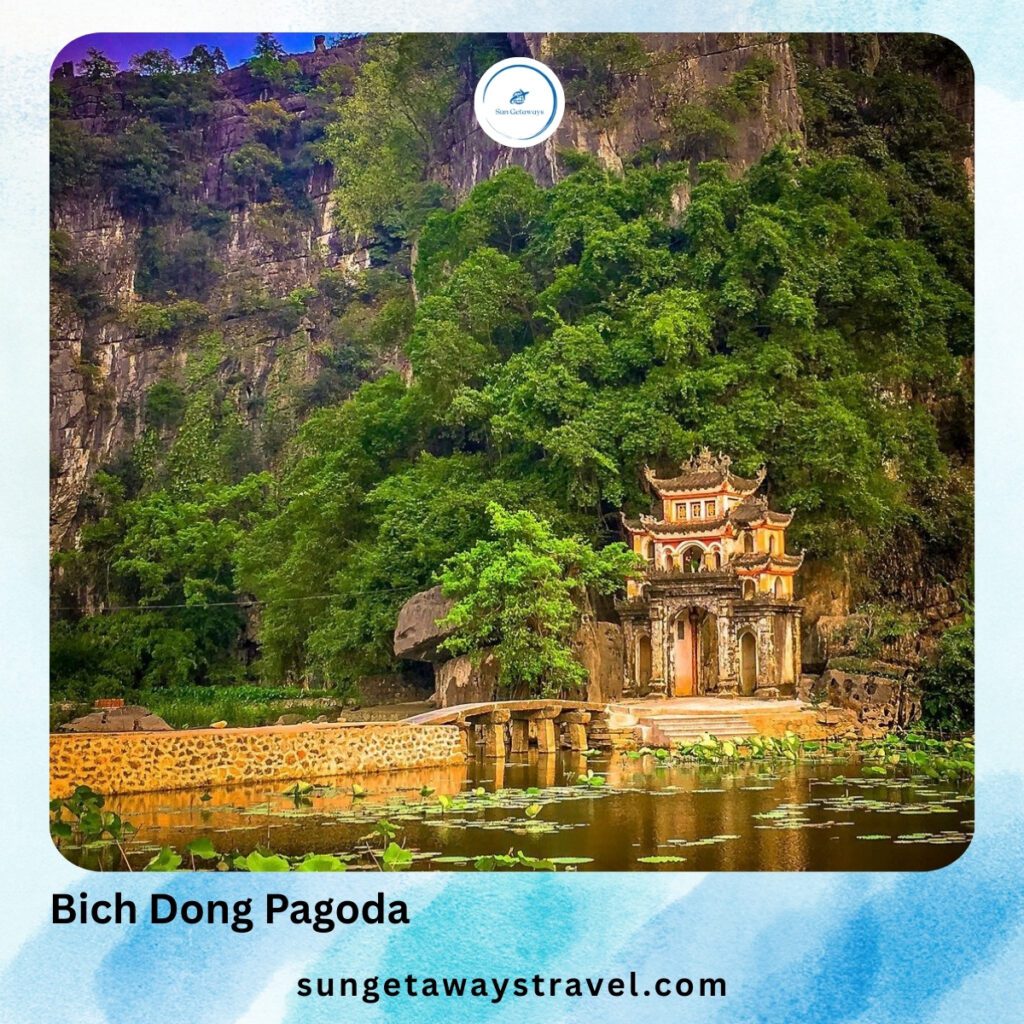

As the ancient capital, Ninh Bình played a pivotal role in shaping Vietnam’s early political and religious landscape. Confucian values, Buddhist teachings, and folk beliefs coexist in daily life, reflected in rituals, architecture, and community gatherings. This blend of faith and tradition makes Ninh Bình a living testament to the enduring spirit of the Vietnam countryside.
2.3. Village Life of Vietnam countryside in Ninh Binh
Life in Ninh Bình’s villages flows with a gentle rhythm. In the early morning, locals paddle sampans through misty rivers, transporting goods or guiding visitors. The sound of oars against water, birdsong, and distant temple bells create a tranquil soundtrack to daily life. It’s a scene that feels untouched by time.
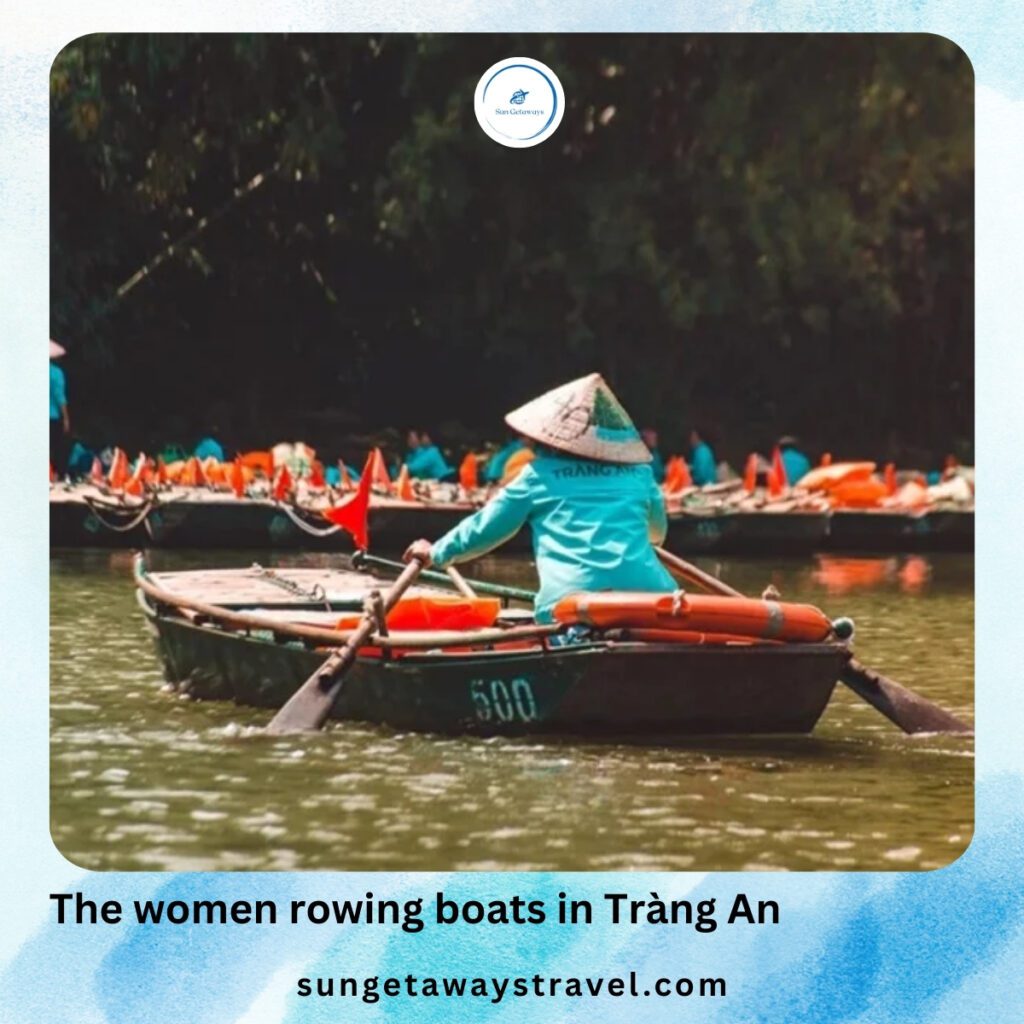

Cycling through the rice fields offers another layer of immersion. Narrow paths lead past grazing buffalo, vegetable gardens, and small shrines tucked under trees. Farmers wave as you pass, inviting conversation or a taste of freshly picked fruit. These interactions are the heart of village life in Vietnam—warm, spontaneous, and deeply human.
2.4. Local Foodways
Dê Núi (Mountain Goat)
Ninh Bình’s rocky terrain provides ideal conditions for raising mountain goats, and locals prize them for their lean, flavorful meat. They most often prepare the goat by grilling it with lemongrass and lime leaves, serving it with a dipping sauce of fermented rice and chili. The meat is tender yet robust, often paired with fresh herbs and rice paper for wrapping.
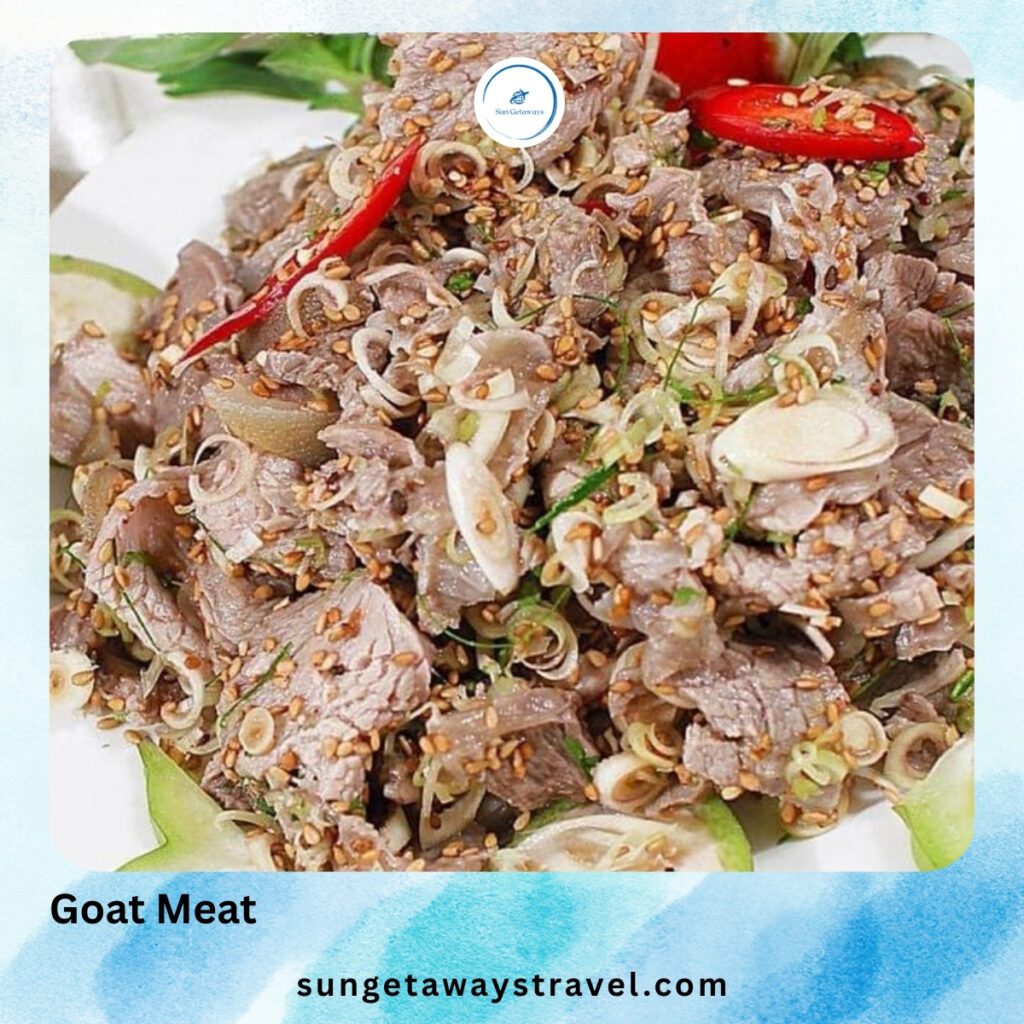

Locals also prepare goats in medicinal stews, believed to boost vitality and circulation. Families and communities often serve these dishes during festivals or gatherings, showcasing the connection between food and tradition. Eating dê núi is not just a culinary experience—it’s a taste of the mountains and the resilience of the Vietnam countryside.
Cơm Cháy (Crispy Rice)
People make Cơm cháy, a beloved snack, from scorched rice traditionally collected from the bottom of the pot. In Ninh Bình, locals elevate it into a specialty—crispy sheets topped with shredded pork, scallions, and a savory sauce. The texture is addictive: crunchy, chewy, and deeply satisfying.
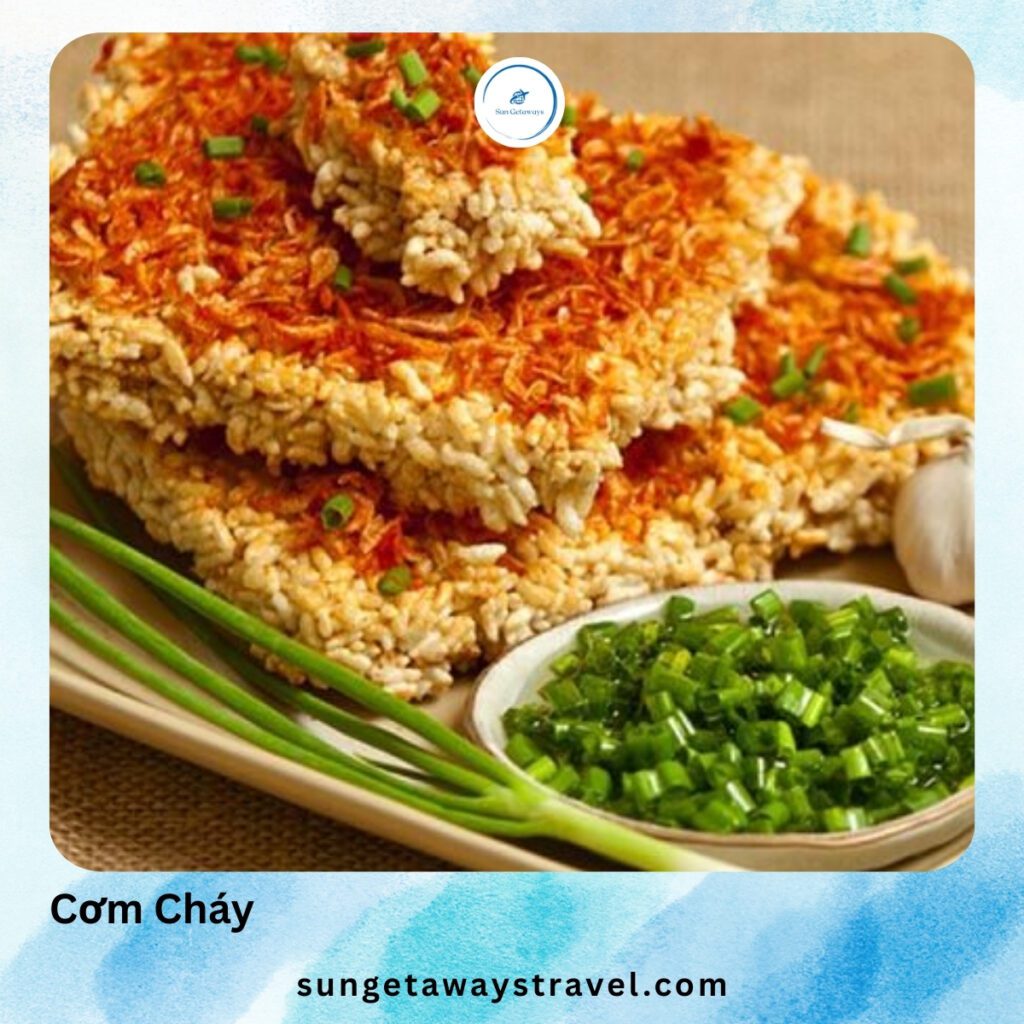

This dish reflects the resourcefulness of village life in Vietnam, where nothing is wasted and everything is transformed with care. Cơm cháy is often sold in local markets or served as an appetizer in family meals, offering a humble yet flavorful glimpse into rural ingenuity.
Rượu Kim Sơn (Kim Sơn Rice Wine)
Rượu Kim Sơn is a potent rice wine brewed in clay jars using traditional methods passed down through generations. Its flavor is strong and earthy, often enjoyed during celebrations or offered to ancestors at altars. Locals believe it warms the body and strengthens community bonds.
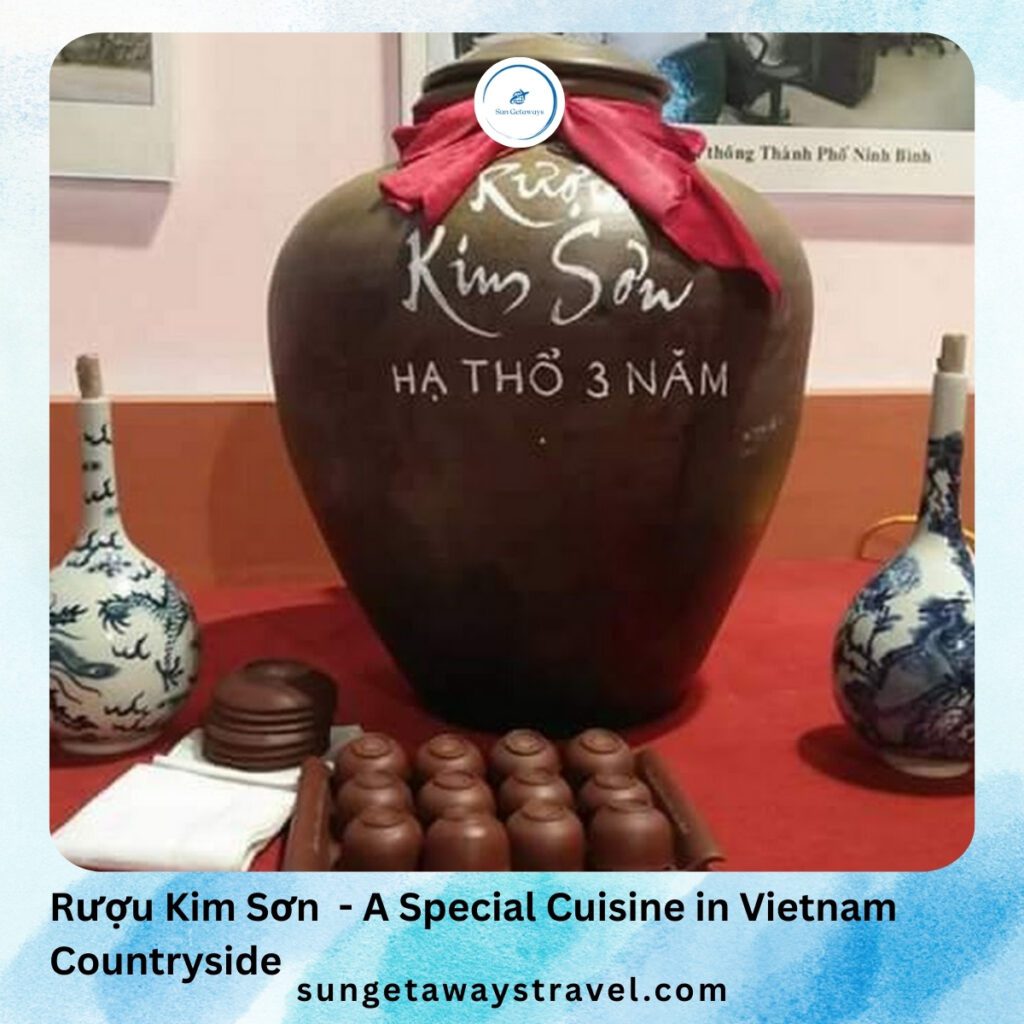

The production of rượu is a communal affair—families gather to ferment, bottle, and share the final product. It’s more than a drink; it’s a symbol of hospitality and heritage. Tasting rượu Kim Sơn is tasting the spirit of the Vietnam countryside, distilled into every drop.
Discover Vietnam’s diverse local flavors, from regional specialties to traditional rice wines. Join our 15-Day Vietnam Food Tour for a full gastronomic adventure!
2.5. Global Recognition
Ninh Bình’s cinematic landscapes have captured international attention, most notably as a filming location for Kong: Skull Island. The dramatic cliffs, winding rivers, and ancient temples provided a stunning backdrop that introduced the region to a global audience. Yet beyond the screen, Ninh Bình remains authentic and untouched.
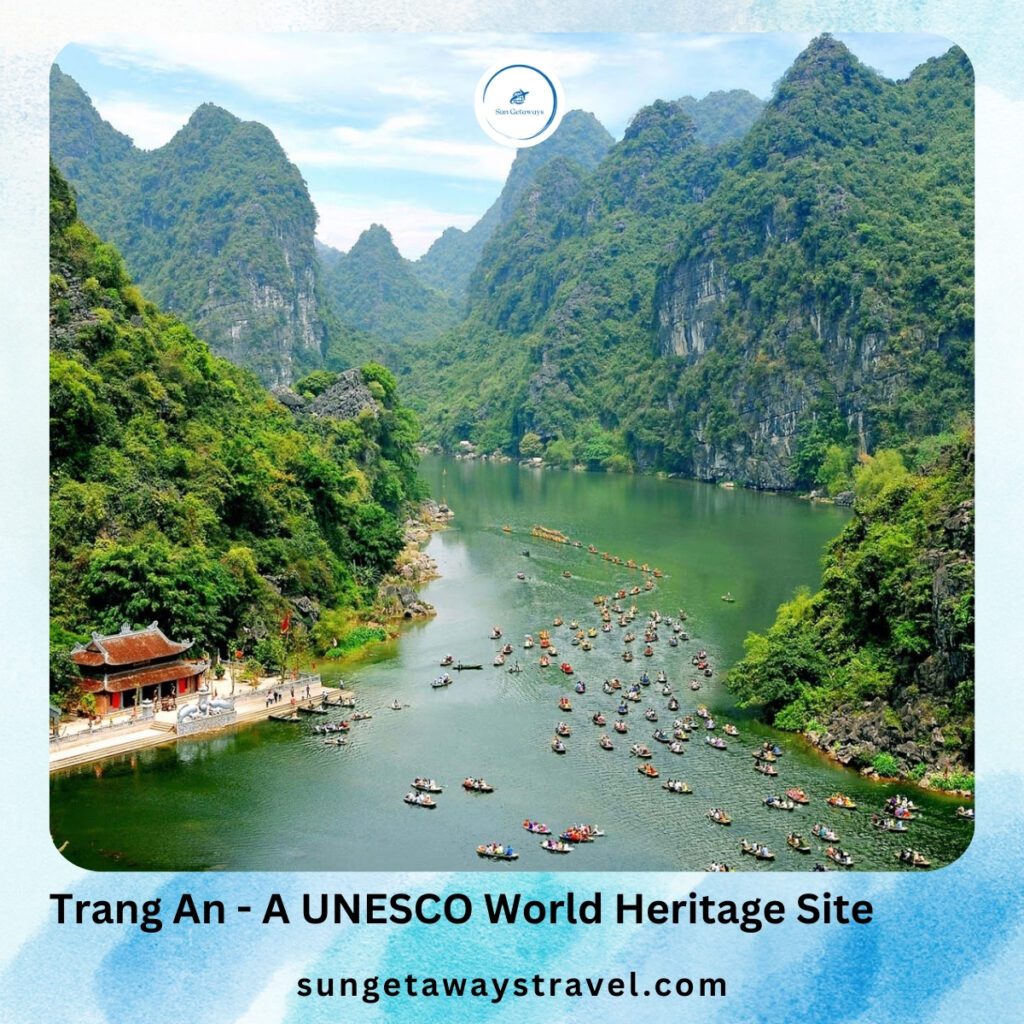

Its recognition as a UNESCO World Heritage Site affirms its cultural and ecological significance. Tràng An’s unique blend of natural beauty and historical depth makes it one of the best countryside destinations in Vietnam, drawing travelers who seek not just sights, but stories. Ninh Bình is not just seen—it is felt, remembered, and revered.
3. Mekong Delta: Southern Rivers, Floating Markets, and Orchard Life
3.1. Landscape & Heritage
Canals and Rice Fields
The Mekong Delta is a vast network of interlacing canals, where water flows into every corner of village life. Narrow tributaries connect endless rice fields, forming a thriving agricultural ecosystem. During the flood season, the water turns silty and golden, reflecting the sky and rows of lush nipa palms.
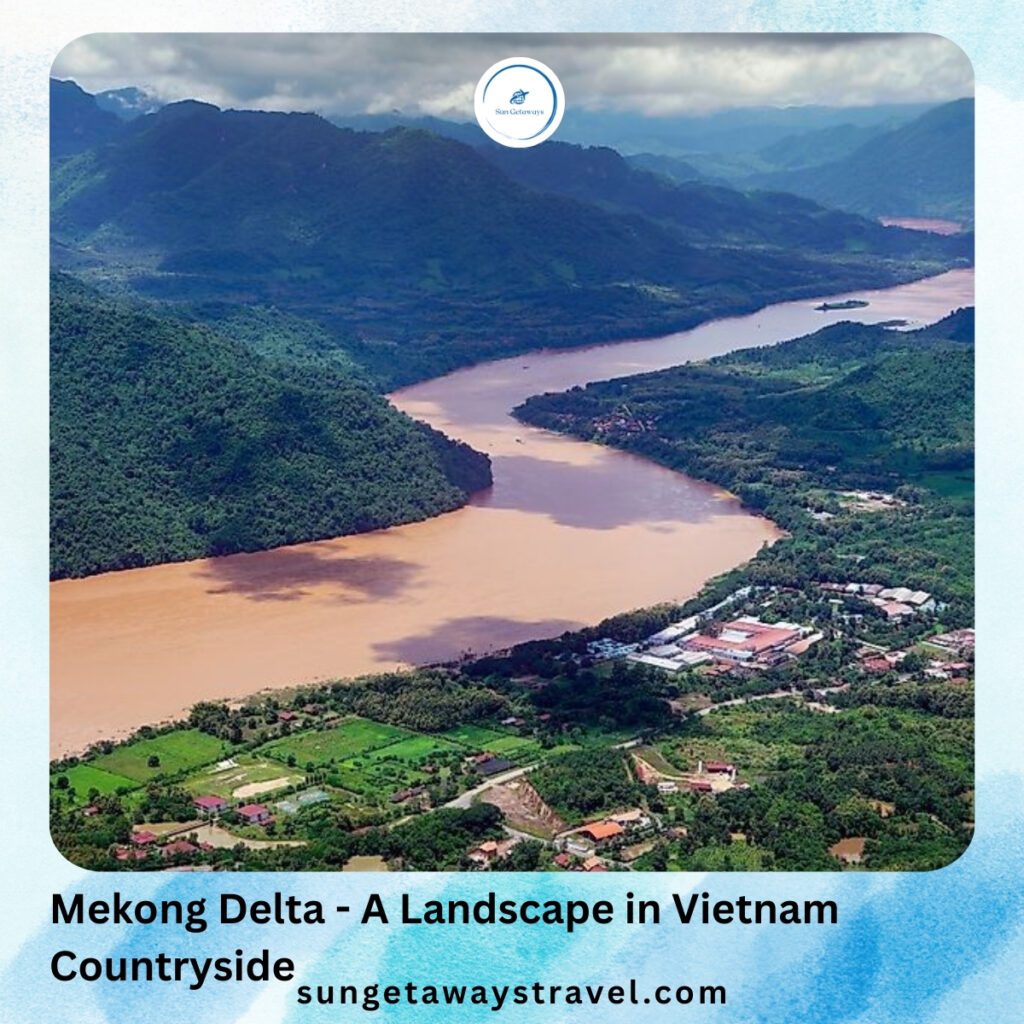

In the fields, farmers harvest rice by hand, bundling stalks and loading them onto sampans for transport. It’s not just a beautiful scene—it’s a portrait of harmony between people and nature, a defining feature of the Vietnam countryside.
Fruit Orchards
The Mekong’s orchard gardens are a tropical paradise. From rambutan and durian to the famed Hoa Loc mango, each fruit carries the distinct flavor of fertile alluvial soil. These expansive gardens are tended by local families, where visitors can pick fruit straight from the tree and enjoy it fresh.
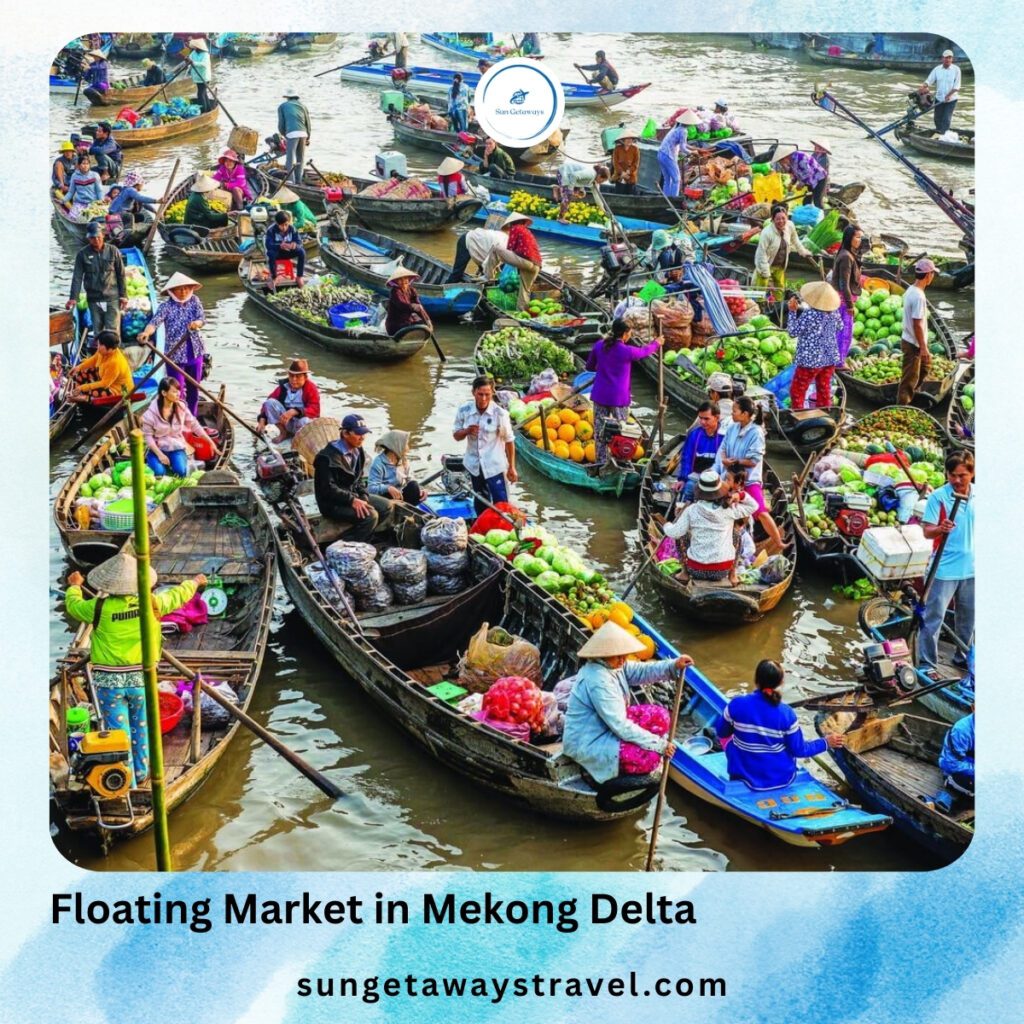

Walking through the orchard, you’ll hear birdsong, rustling leaves, and the sweet scent of ripe fruit. It’s an essential experience when exploring village life in Vietnam—intimate, vibrant, and deeply rooted in the land.
3.2. Village Life Vietnam in the Delta
Life in the Mekong Delta revolves around boats and the rhythm of the river. At dawn, families paddle out to floating markets, carrying fresh vegetables, fish, and steaming bowls of noodle soup. The Cái Răng Floating Market is a vivid display of energy and ingenuity, where commerce flows as freely as the water.
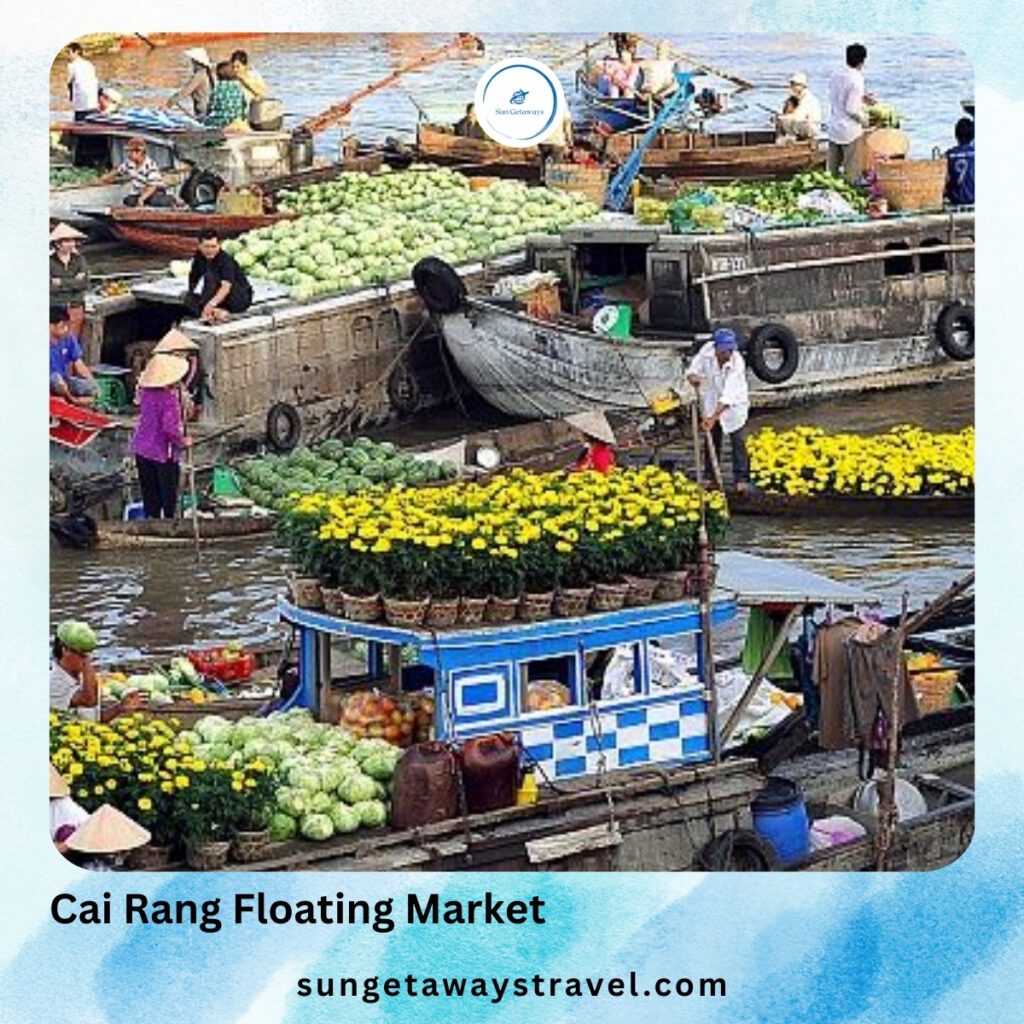

Beyond the markets, traditional crafts flourish. Coconut candy making in Bến Tre, fish farming in An Giang, and water hyacinth weaving in Đồng Tháp are all part of the local economy. Visitors can join these activities, chat with artisans, and gain a deeper appreciation for the labor and creativity that define village life in Vietnam.
3.3. Local Foodways
Grilled Snakehead Fish (Cá Lóc Nướng Trui)
Grilled snakehead fish is a rustic yet flavorful dish that captures the essence of southern cooking. The fish is grilled whole over rice straw, without seasoning, preserving its natural sweetness. Once cooked, the charred skin is scraped off, revealing tender, aromatic meat.
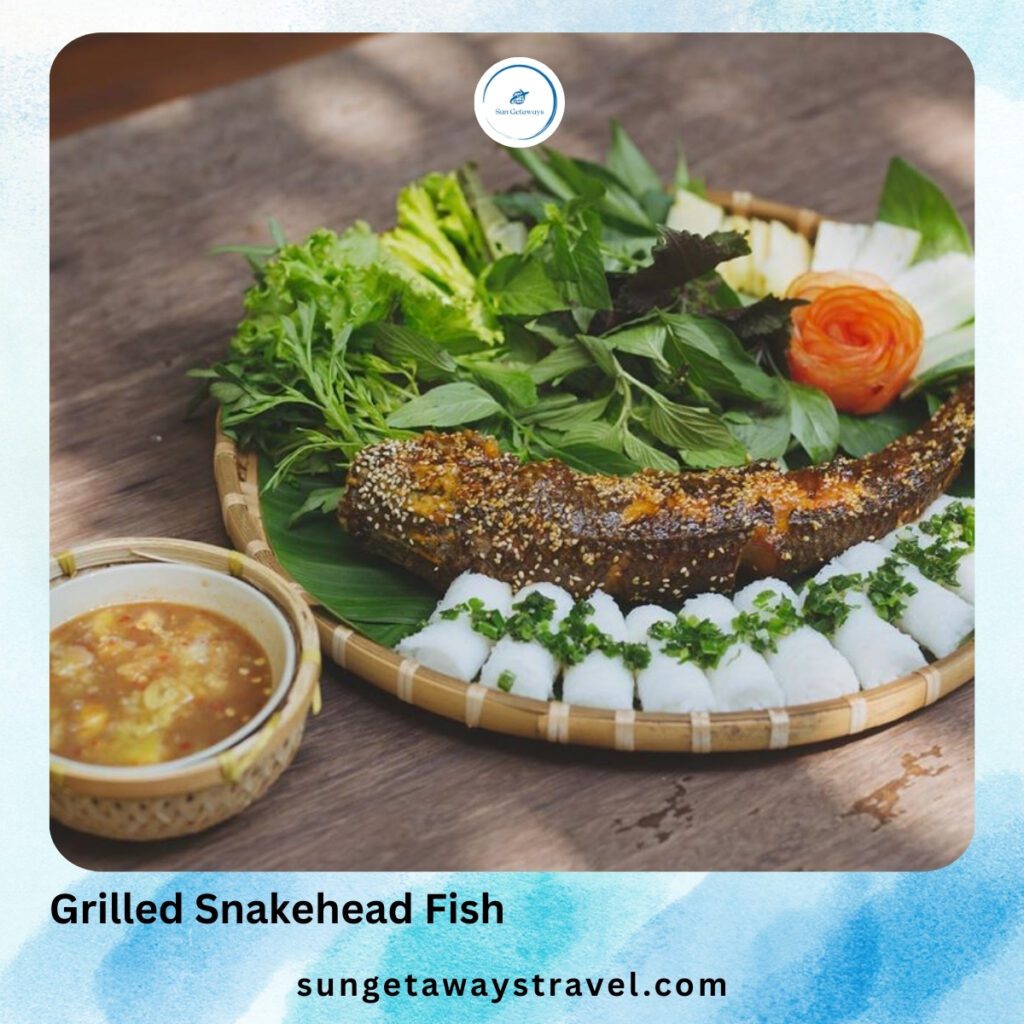

It’s typically served with rice paper, fresh herbs, and a sweet-sour dipping sauce. This dish is a staple at countryside gatherings, reflecting the generosity and simplicity of the Vietnam countryside.
Fermented Fish Hotpot (Lẩu Mắm)
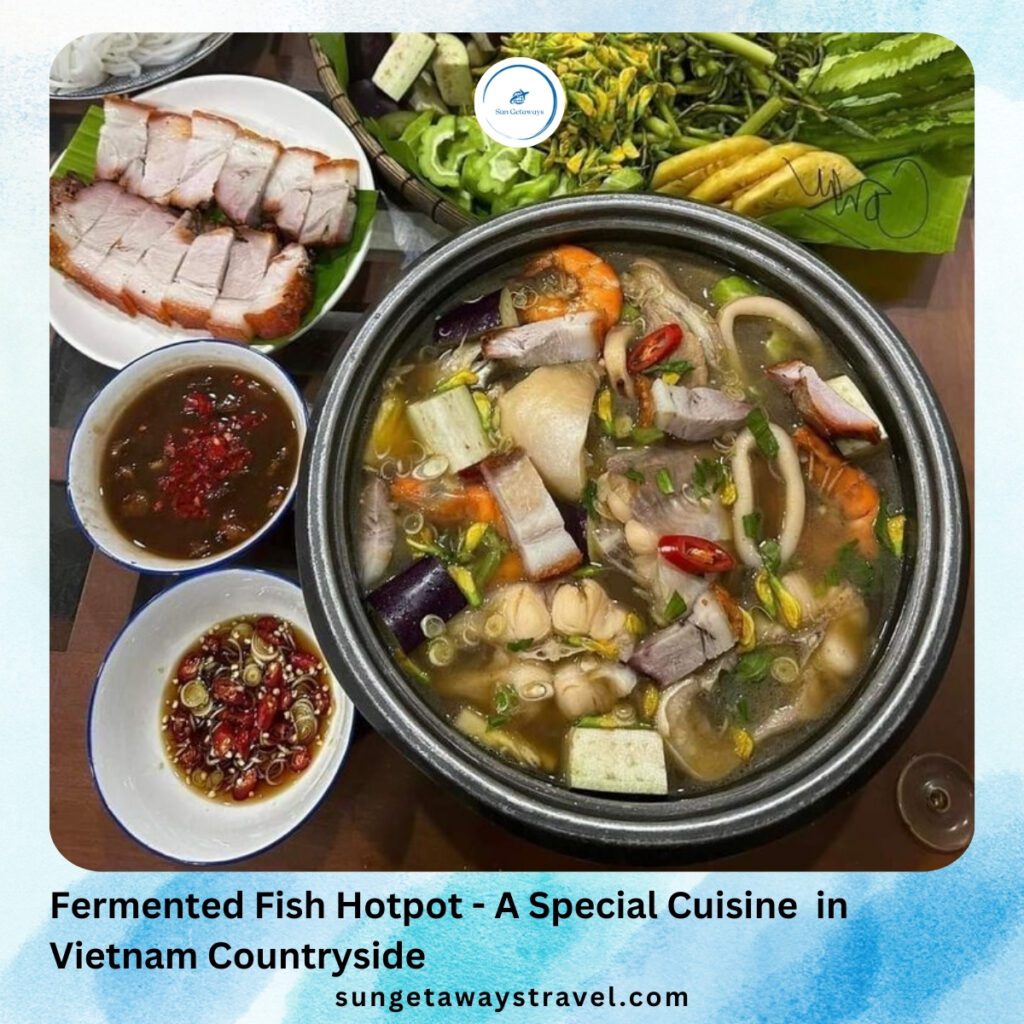

Lẩu mắm is a bold, aromatic hotpot made from fermented fish like cá linh or cá sặc. Its rich broth is layered with flavors and served with wild vegetables such as water lily stems, hyacinth leaves, and eggplant. Each pot is a celebration of local produce and culinary heritage. More than just a meal, lẩu mắm is a symbol of resilience and resourcefulness in village life in Vietnam, where every ingredient tells a story.
Tropical Orchard Fruits
Visitors can harvest fruit, enjoy it in the shade of the orchard, and hear stories from farmers about each variety. It’s a culinary experience that connects you to the soil, the people, and the spirit of the Vietnam countryside. Mekong fruits are not only delicious—they’re tied to memory and tradition. Creamy durian, sweet rambutan, and fragrant Hoa Loc mangoes are grown using time-honored methods, often without chemicals.
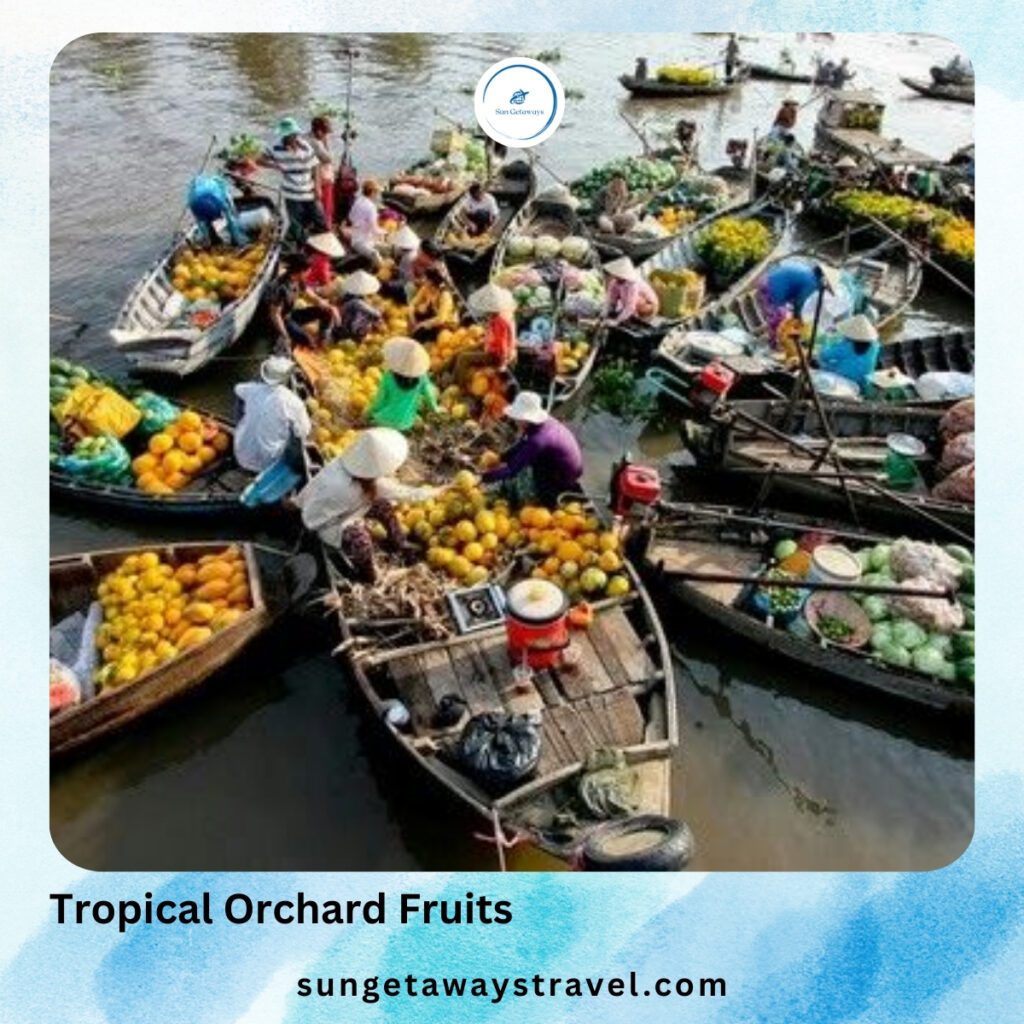

3.4. Music & Festivals
The Mekong Delta is the birthplace of Đờn Ca Tài Tử, a traditional music genre recognized by UNESCO. Performances often take place in family homes, with string instruments and soulful vocals echoing through quiet villages.
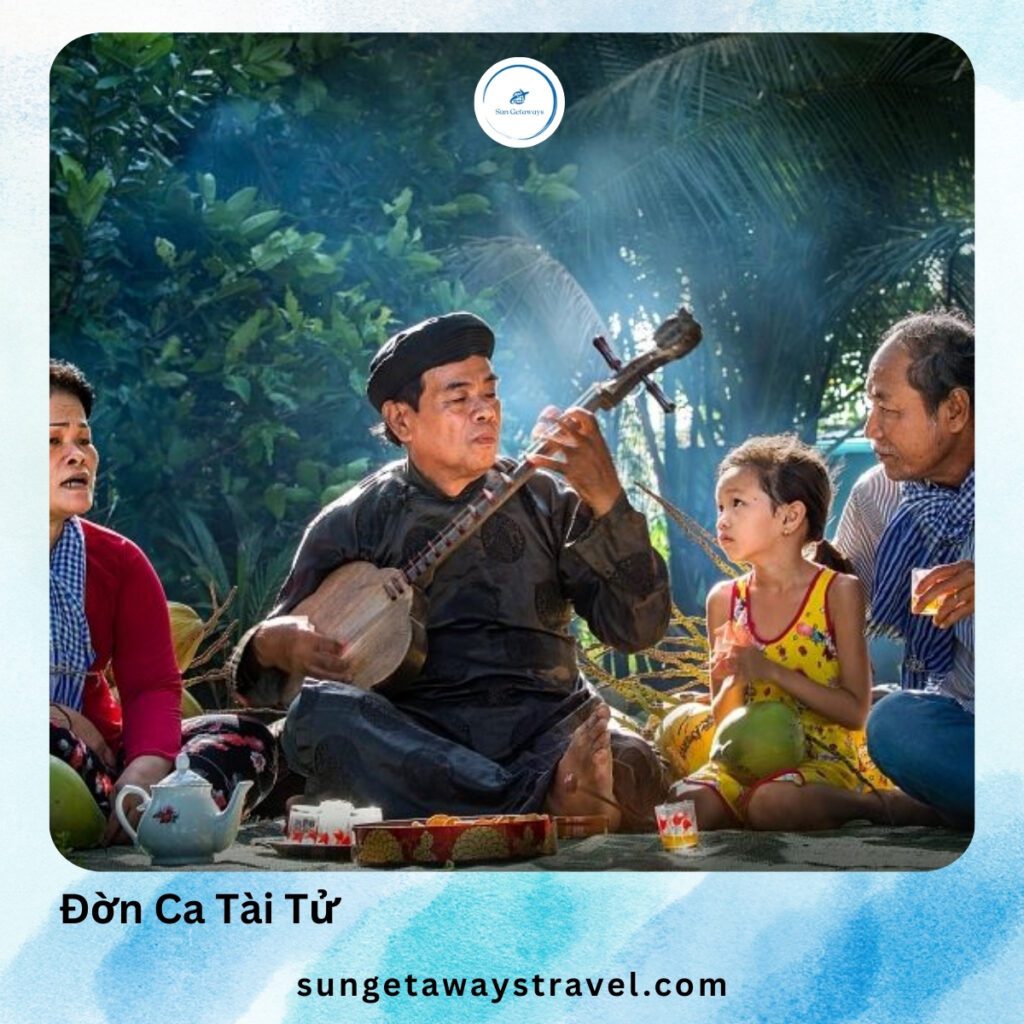

Festivals like Ok Om Bok (Moon Worship Festival), the Tiền Giang Fruit Festival, and Ghe Ngo Boat Races in Sóc Trăng showcase the region’s cultural diversity and strong community spirit. These events are vibrant expressions of village life in Vietnam, where music, food, and faith come together.
Curious about Vietnam’s music and festivals? Explore traditional performances, vibrant celebrations, and cultural experiences on our Festivals & Holidays in Vietnam guide.
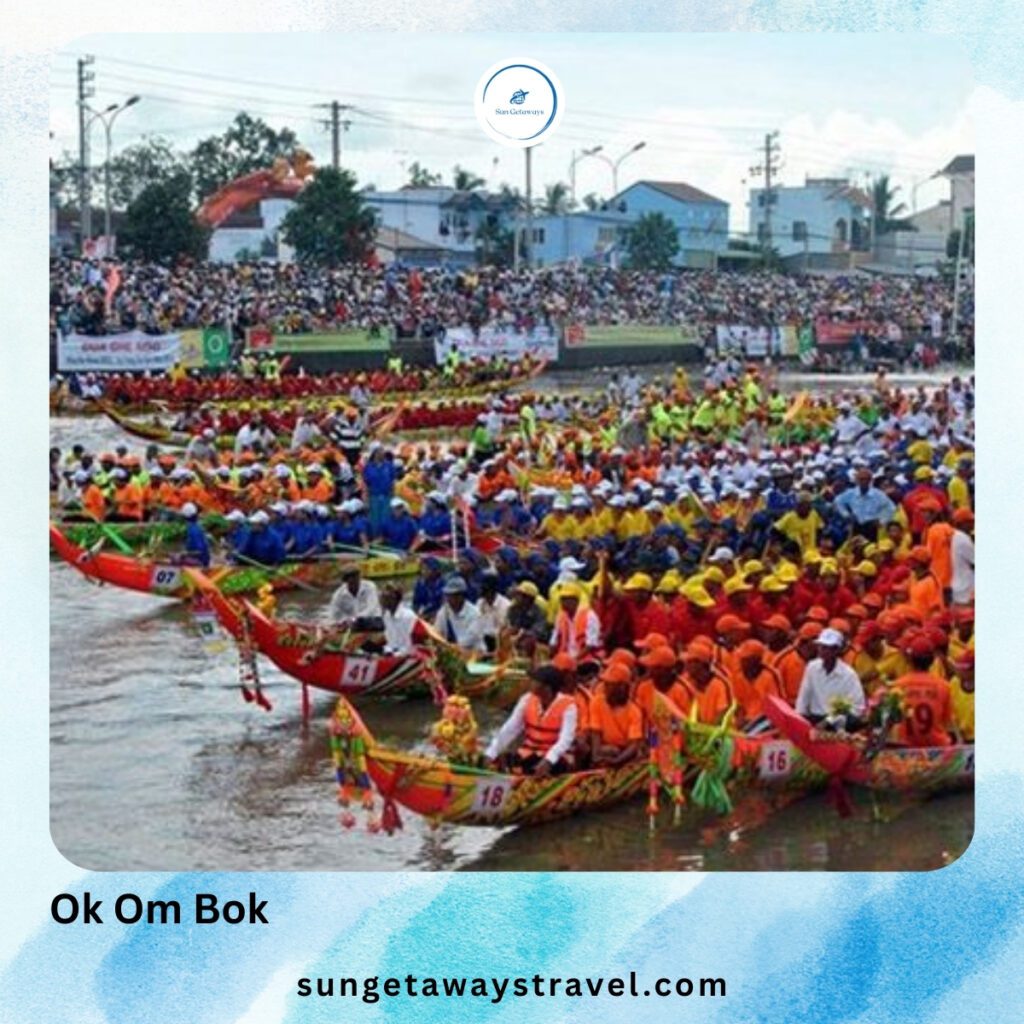

3.5. Cultural Resilience
Mekong Delta residents are known for their adaptability and creativity. When floods arrive, they don’t panic—they adjust: building stilt houses, navigating by boat, and cultivating flood-resistant crops. Models like rice–fish–lotus farming show how innovation thrives in adversity.
Community bonds are strong. Neighbors help each other harvest rice, repair homes, and organize festivals. This solidarity is what makes the Mekong Delta one of the best countryside destinations in Vietnam, where people are the region’s greatest treasure.
3.6. Signature Scene
Picture a morning at the Cái Răng Floating Market. The sun rises, casting golden light across the water. Boats crowd together, overflowing with fruit, vegetables, and laughter. A woman paddles by, brewing coffee on her boat, smiling as she serves a cup to a passing vendor. The scent of ripe mangoes, the calls of sellers, and the gentle rocking of the river create a living mosaic of the Vietnam countryside
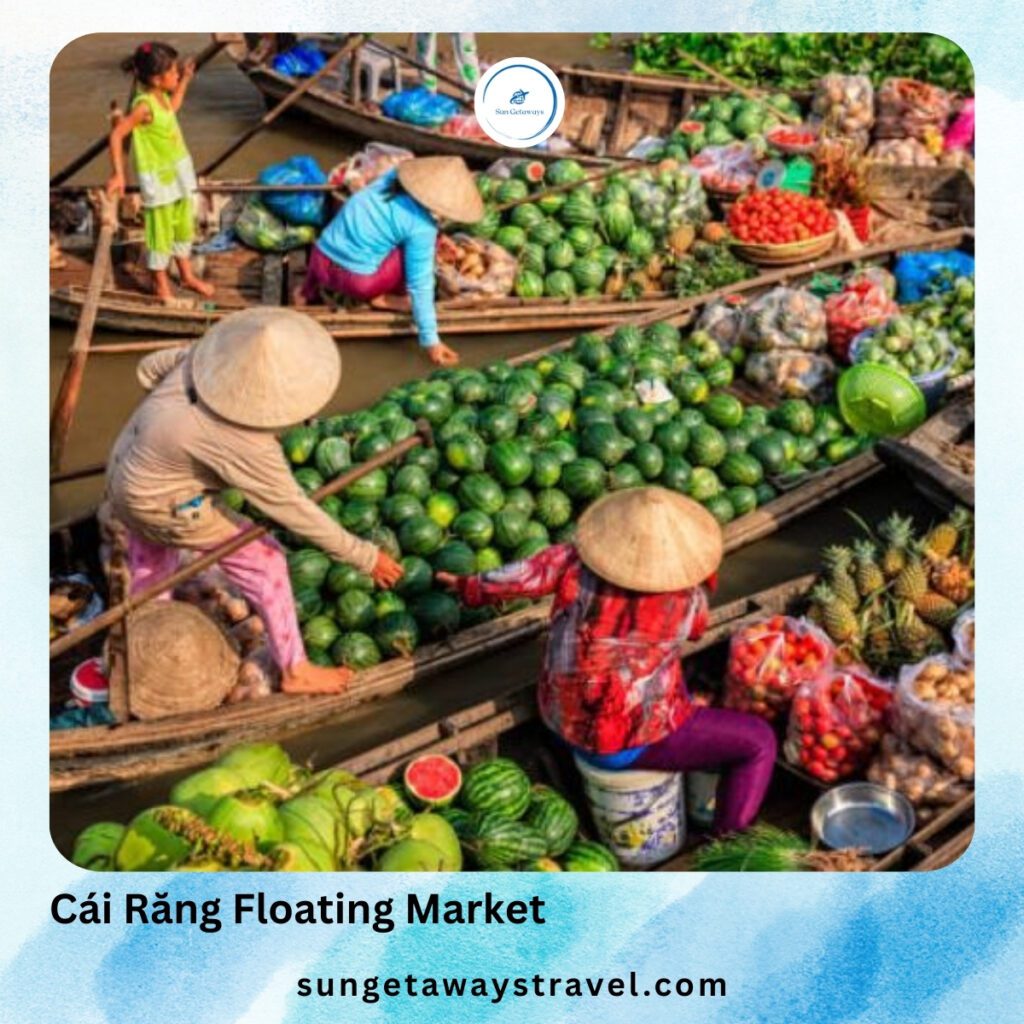

👉 Extend your Mekong journey – combine it with Cu Chi Tunnels or a vibrant Ho Chi Minh City stay for the full southern Vietnam experience.
4. Comparing Vietnam’s Countryside: Ninh Binh vs. Mekong Delta
4.1. Landscape, Culture, and Activities
| Aspect | Ninh Bình (North) | Mekong Delta (South) |
| Natural Landscape | Limestone karsts, rivers, rice paddies, caves | River networks, floating markets, orchards, floodplains |
| Cultural Heritage | Ancient capital Hoa Lư, pagodas, Confucian and Buddhist traditions | Folk music (Đờn ca tài tử), Khmer festivals, village temples |
| Signature Activities | Boat rides through caves, cycling past rice fields, temple visits | Sampan rides, orchard tours, coconut candy making, fish farming |
| Village Life | Farming, incense offering, homestays with rice-based meals | Floating trade, craft villages, communal farming and flood adaptation |
| Atmosphere | Quiet, spiritual, misty mornings | Lively, colorful, river-centric |
| Global Recognition | UNESCO World Heritage (Tràng An), Kong: Skull Island filming location | UNESCO recognition for Đờn ca tài tử, famous floating markets |
4.2. Culinary Highlights and Local Specialties
| Category | Ninh Bình (North) | Mekong Delta (South) |
| Main Protein | Mountain goat (grilled, steamed, medicinal stews) | Snakehead fish (grilled over straw, served with herbs) |
| Rice Dish | Cơm cháy (crispy rice with pork floss and sauce) | Lẩu mắm (fermented fish hotpot with wild vegetables) |
| Local Beverage | Rượu Kim Sơn (traditional rice wine) | Strong southern coffee, fresh coconut water |
| Fruit Specialties | Seasonal fruits (banana, guava) | Durian, rambutan, Hoa Lộc mango |
| Dining Style | Communal meals, often outdoors with family and neighbors | Floating kitchens, orchard picnics, riverside feasts |
| Food Experience | Earthy, mountain-influenced flavors | Bold, sweet-savory, tropical and river-inspired |
👉 Curious about more unique experiences? Browse our full collection of experiences. There’s something for every kind of traveler!
5. Conclusion — Vietnam Countryside as Living Tradition
Ninh Bình and the Mekong Delta each reflect the soul of the Vietnam countryside—one shaped by mountains and ancient temples, the other by rivers and orchard life. As two of the best countryside destinations in Vietnam, they offer travelers a genuine glimpse into village life in Vietnam: peaceful, rooted, and full of living tradition.
👉 Got questions or need help planning your visit? Feel free to reach out here — we’re happy to assist!
Ask a question
Leave a Comment (0)
No questions yet. Be the first to ask a question!

